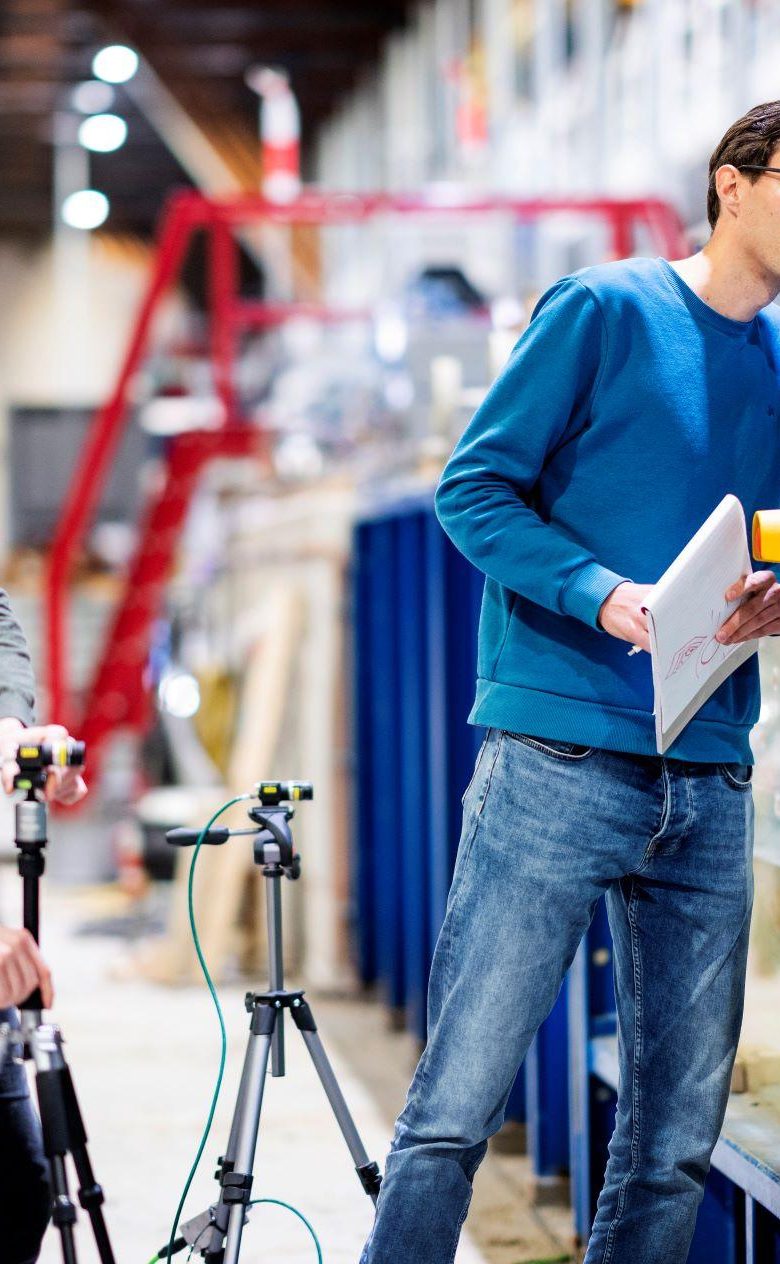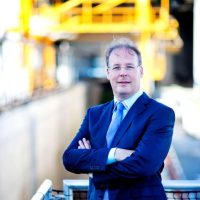Scheldt Flume
The Scheldt Flume is a state-of-the art wave flume with a total length of 110 m. The flume has wave generators at both sides, which enables one to use for wave generation and one for wave dissipation. The flume can also be split into two flumes such that 2 projects can be performed simultaneously in the two flumes, each being 55 m long. At one side of the flume a pumping system is installed.

The wave generators are equipped with online Active Reflection Compensation. This means that waves propagating towards the wave boards are measured and that the wave boards compensates for these reflected waves. Also wave board control for random second-order waves is operational to compensate for spurious waves.
Application areas
The Scheldt flume can be used for coastal and offshore related projects. In such studies aspects of e.g. armour stability, wave impact loading and the determination of the relevant hydraulic conditions for design purposes are at issue. The 2 wave generators make it possible to test structures by wave attacking from both sides.
Also the influence of opposed propagating waves on e.g. erosion and dissipation can be studied. It is possible to construct all kind of foreshore bathymetries in our Scheldt flume, both fixed bed and mobile bed foreshores to ensure the wave behaviour in the model will be the same as in prototype. Current related projects can be carried out because of a powerfull pumping system.
Projects
We are involved in studies on a diversity of coastal and offshore structures. Typical studies for the Scheldt Flume are related to:
- Breakwaters: stability of armour layers, wave overtopping, wave pressures, wave forces, optimisation of breakwater designs
- Dikes: wave overtopping, wave run-up, stability of inner slopes, wave forces
- Jetties: wave pressures and wave forces on piles and deck of jetties
- Dunes and beaches: dune erosion, stability of beaches
- Scour and bed protection
- Outfalls; impact of current on erosion
TKI Deltatechnology
The Dutch government encourages collaborations between private parties, scientific institutions, and governmental institutions to stimulate new ideas and to tackle the societal challenges of the Netherlands. This can be done through the TKI scheme (Top Consortia Knowledge and Innovation). What does such a collaboration look like in practice? We explain this in the video below, based on the CLIMate Adaptation of Coastal Structures (CLIMACS) project.
In this project, Van Oord, The Weather Makers, Delft University of Technology and Deltares are working together on research into the effect of a raised foreshore. This allows us to ensure that coastal structures, such as ports and dikes, are better protected against sea level rise and increased wave loads.
You have not yet indicated whether you want to accept or reject cookies. This means that this element cannot be displayed.
Or go directly to:
Technical specifications:
Wave flume
- Length: 110 m
- Width: 1.0 m
- Height: 1.2 m
Wave generators
- Piston-type (translatory) wave boards; 2 identical wave boards on both sides
- Full stroke: 2 m (1 m + 1 m)
- Maximum velocity: 1.2 m/s
- Max. acceleration: 4.7 m/s2
Wave characteristics
- Frequency range: between f = 0.01 Hz and f = 2 Hz
- Maximum regular wave height Hmax: 0.4 m
- Maximum significant wave height Hm0: 0.25 m
Pumping system
- Opposing and following currents
- Max. pumping capacity: 0.6 m3/s
Features
- Glass wall flume with three meter long observation windows
- Remote-controlled instrument carriage
You have not yet indicated whether you want to accept or reject cookies. This means that this element cannot be displayed.
Or go directly to:

